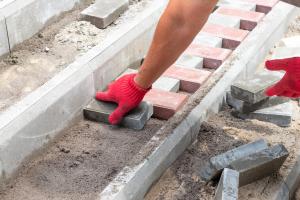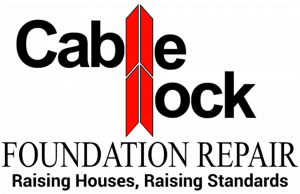Identifying Common Causes of Foundation Problems
Foundation issues don’t occur in isolation”
LAPLACE, LA, UNITED STATES, January 10, 2025 /EINPresswire.com/ -- Foundation problems are a serious concern for property owners, often resulting from a combination of environmental, structural, and maintenance factors. Understanding the underlying causes of these issues is the first step in addressing and preventing long-term damage. — Travis Hartley
Travis Hartley, Project Manager at Cable Lock Foundation Repair in Louisiana, explains the primary contributors to foundation problems and why identifying these factors early is essential.
“Foundation issues don’t occur in isolation,” says Hartley. “They’re the result of specific conditions that, if left unaddressed, can compromise the integrity of a structure.”
Common Causes of Foundation Problems
1. Soil Composition and Movement
The type of soil beneath a property plays a significant role in the stability of its foundation. Some soils are more prone to movement and expansion, which can lead to settling or cracking over time.
Expansive Clay Soils: Clay-heavy soils expand when wet and contract when dry, exerting pressure on the foundation. This repeated movement, known as “soil heaving,” can cause significant stress.
Sandy Soils: Sandy soils drain water quickly but lack the stability needed to support heavy structures, leading to uneven settling.
Silt and Loam Soils: These soils retain water and can weaken when saturated, making them less reliable for foundation support.
2. Poor Drainage
Inadequate drainage systems can lead to water pooling near the foundation, creating hydrostatic pressure that pushes against the structure. Over time, this can result in:
Soil erosion, weakening the foundation’s support
Water infiltration, causing cracks or damp conditions in crawl spaces
Increased risk of settlement due to softened soil
Effective drainage solutions, such as French drains or properly functioning gutters, are critical in preventing water-related foundation damage.
3. Tree Roots and Vegetation
The placement of trees and large shrubs near a building can impact the foundation in two ways:
Soil Drying: Roots draw moisture from the soil, causing it to shrink and settle unevenly.
Physical Intrusion: Tree roots can grow against the foundation, exerting pressure and causing cracks or shifts.
Selecting appropriate landscaping and maintaining adequate distance between trees and structures helps mitigate these risks.
4. Seasonal and Weather-Related Changes
Louisiana’s climate, characterized by heavy rains, high humidity, and occasional droughts, creates ideal conditions for soil movement and foundation problems.
Heavy Rainfall: Saturated soil can erode or become unstable, leading to settling or sinking.
Drought Conditions: Prolonged dry periods cause the soil to contract, pulling away from the foundation and creating gaps.
Temperature Fluctuations: Changes between warm and cold weather can cause soil to expand and contract, exerting stress on the foundation.
5. Improper Construction Practices
Foundations that are not designed or constructed to suit local soil and weather conditions are more susceptible to damage. Common issues include:
Inadequate depth of foundation footings
Poor-quality materials used during construction
Failure to compact the soil properly before building
Addressing these shortcomings during construction is critical for long-term stability.
6. Plumbing Leaks
Undetected leaks in underground pipes can saturate the soil near the foundation, leading to uneven settling or erosion. Common sources of leaks include:
Broken or deteriorating sewer lines
Leaking irrigation systems
Faulty water supply lines
Routine plumbing inspections can help identify and address leaks before they contribute to foundation issues.
7. Increased Building Loads
Adding extensions or extra floors to a structure without considering the foundation’s load-bearing capacity can cause stress and eventual failure. It’s important to evaluate the foundation’s ability to support additional weight before making structural changes.
The Risks of Ignoring Foundation Issues
Foundation problems often worsen over time if left unaddressed. Ignoring early warning signs, such as cracks, uneven floors, or sticking doors, can lead to:
Structural Damage: The stability of walls, roofs, and floors can be compromised.
Higher Repair Costs: Minor issues are easier and less expensive to fix than extensive damage.
Safety Hazards: Severe foundation issues can create unsafe living or working conditions, particularly in buildings with significant settling.
Identifying Foundation Issues Early
Early detection is key to preventing long-term damage. Property owners should remain vigilant for warning signs, including:
Visible cracks in walls, ceilings, or floors
Water pooling near the foundation
Gaps between walls and ceilings or floors
Uneven or sloping floors
Bowing or leaning walls in basements or crawl spaces
Scheduling a professional inspection at the first sign of trouble ensures that potential problems are addressed before they escalate.
Solutions for Addressing Foundation Problems
The best approach to foundation repair depends on the underlying cause. Methods such as the Cable Lock system provide effective stabilization by addressing the root issues, whether caused by soil movement, water damage, or structural deficiencies.
Solutions typically involve:
Reinforcing the foundation with steel pilings or piers
Improving drainage systems to manage water flow
Correcting soil conditions with proper compaction or moisture management
Conclusion
Foundation problems are a complex challenge, often stemming from a combination of environmental, structural, and maintenance factors. By understanding the causes and taking proactive measures, property owners can protect their investments and avoid costly repairs.
For areas like Louisiana, where soil conditions and weather patterns create unique challenges, identifying and addressing foundation issues early is essential. With a clear understanding of the risks and contributing factors, homeowners and businesses can take the necessary steps to ensure long-term stability and safety.
Morgan Thomas
Rhino Digital, LLC
+1 504-875-5036
email us here
Visit us on social media:
Facebook
Legal Disclaimer:
EIN Presswire provides this news content "as is" without warranty of any kind. We do not accept any responsibility or liability for the accuracy, content, images, videos, licenses, completeness, legality, or reliability of the information contained in this article. If you have any complaints or copyright issues related to this article, kindly contact the author above.


